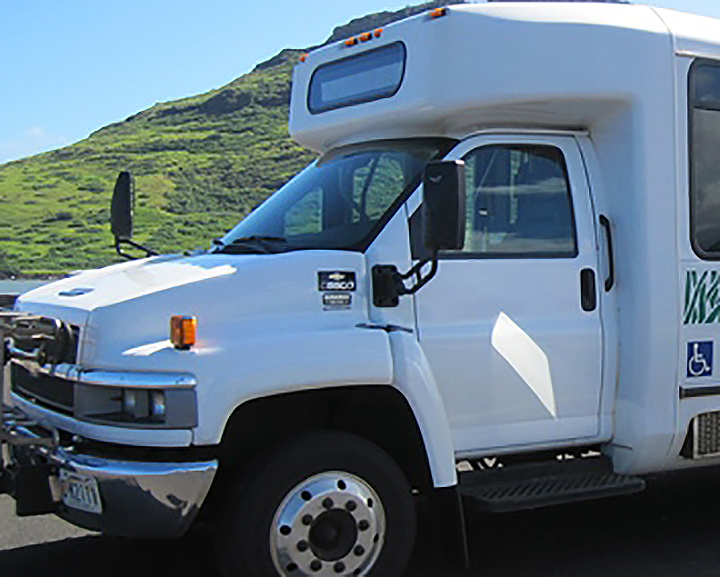It will definitely be darker on Pacific Missile Range Facility (PMRF) beginning September 15th as the base begins its “Dark Skies” program.
PMRF will be turning off all non-essential lighting on the base and modifying night time operations to help protect rare Hawaiian seabirds and prevent “shearwater fallout.” The Newell’s Shearwater and Hawaiian Petrel are two of Hawaii’s seabirds protected by the Endangered Species Act (ESA). During the shearwater fledging season which runs from September 15 to December 15, fledglings of these mountain-nesting birds leave the safety of their nests to make their nocturnal maiden voyages to sea using the position of the stars and natural light from the moon to plot their courses. Unfortunately, a number of these birds become disoriented by mistaking manmade lights for natural moonlight as they fly over inhabited areas of the island. This can result in a bird accidentally flying into a building, light, electric power cable, or circling a light until they are too exhausted to reroute to sea and eventually falling to the ground, sustaining injury, being hit by a car or falling prey to domestic and wild animals.
John Nelson, PMRF Installation Environmental Program Director shared some tips on how the PMRF community can help protect these seabirds and what to do if they find one in need of help.
“Turn off all unnecessary outdoor lighting, draw curtains and blinds during the hours of 1800 – 0600, keep pets leashed and supervised at all times and refrain from feeding wildlife including feral cats. If you should happen to find an injured seabird on PMRF, call the PMRF Natural Resources duty phone at (808) 208-4416. Do not attempt to approach or move the bird unless it is in immediate danger. If the bird is in danger, use thick gloves or a piece of cloth to cover the head, slowly grabbing it from behind. Ensure a firm grip, restricting the wings from flapping but paying special attention not to crush it. Place the bird in a well ventilated box or pet carrier and transfer it to the Save Our Shearwaters (SOS) aid station box located at the PMRF Pass and I.D. gate. Do not give food or water to the bird. If at all possible, maintain watch over the bird until PMRF Security or PMRF Environmental personnel can transport it to rehabilitation professionals,” said Nelson.
This is the second year that PMRF is initiating the “Dark Skies’ program. PMRF personnel have been working closely together to ensure the program is successful by conducting pre-season lighting checks, identifying potential areas to minimize impact, informing and educating base personnel and ensuring procedures are in place to aid an injured bird in need of assistance.
“Conservation of the environment and wildlife are top priorities for PMRF. We take our environmental responsibility seriously and are consistently working to safeguard the environment and wildlife. The “Dark Skies” program is a combined base effort. Mission operations, schedule changes, training, safety and security of the base and its residents all have to be taken into account. A lot of advanced planning is required to ensure that we achieve our mission and help keep the birds safe at the same time. It’s truly a “Team PMRF” effort and one that cannot be accomplished without the support and cooperation of every member of the PMRF Ohana and the neighboring community,” said Captain Vincent Johnson, Commanding Officer, Pacific Missile Range Facility.
PMRF works closely with federal and state agencies, schools, conservation organizations, the public and the host community to implement groundbreaking initiatives towards conservation, environmental protection and the protection of endangered species. PMRF is the recipient of the 2015 Chief of Naval Operations Environmental Award as well as the 2015 Secretary of the Navy Environmental Award for its achievements in environmental stewardship.



Discover more from ForKauaiOnline
Subscribe to get the latest posts sent to your email.





Leave a Reply